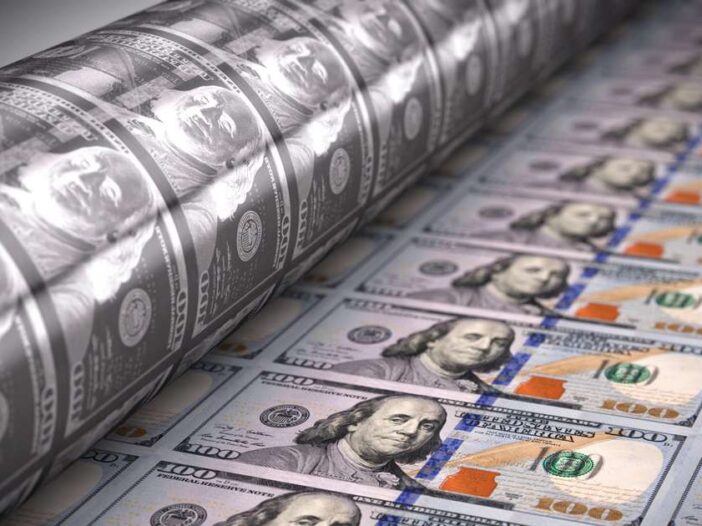If you have not yet heard of Modern Monetary Theory (MMT), you will soon. If you’ve heard of it but don’t know what it means, join the club. There are only a handful of experts who really understand MMT.
Those who do understand it fall into two camps. The true believers who see MMT as the answer to practically every social policy issue facing the world today. And the sceptics who view MMT as intellectual snake oil that will lead us down a path to financial ruin.
I place myself in the latter category. Still, I recognise that you cannot effectively oppose a doctrine unless you understand it better than the advocates.
Over a series of Daily Reckoning editions, I’ll provide a full explanation of MMT — what it is, how it works, and what might go right or wrong as it is implemented. I’ll rely on you to make up your own mind about whether MMT can do everything it claims. My goal is to offer a detailed analysis of MMT, complete with the pros and cons, so you have the information needed to make a reasoned decision.
Who cares about MMT? The real world!
This is not just another academic debate. MMT is now the leading theory driving fiscal and monetary policy in the US, the world’s key economy. A failure to understand MMT is equal to a failure to understand what’s driving US economic policy, capital markets, and investment performance.
How to Survive Australia’s Biggest Recession in 90 Years. Download your free report and learn more.
The irony of MMT’s influence is that even the policymakers who are implementing MMT don’t know what it is. MMT says that deficits don’t matter. MMT says the government can spend as much as it wants on social programs. MMT says that the Federal Reserve can monetise unlimited amounts of US government debt.
All of these policies are already happening. US deficit spending will grow about $8 trillion in fiscal years 2020 and 2021. Total national debt went from $23 trillion at the end of 2019 to $27 trillion by 1 October 2020. That’s a 17% increase in nine months.
Those figures do not account for the $950 billion stimulus package enacted in December 2020, or the $2 trillion stimulus package expected in March 2021, nor the $4 trillion spending package planned by the Biden administration for later in 2021.
When this additional spending (net of taxes) is included in the total, national debt should surge past $32 trillion by early 2022. That would mark a 40% increase in the national debt since the end of 2019. These numbers are astounding and unprecedented, but are consistent with the doctrine of MMT.
Modern Monetary Theory Practice
Likewise, the Federal Reserve M1 money supply has grown from $3.9 trillion at the end of 2019 to $6.8 trillion as of 1 February 2021. That’s a $2.9 trillion, or 74%, increase in 14 months. The Fed is expected to increase the money supply by trillions of dollars more in the coming year as it moves to monetise the new debt created by deficit spending. This surge in money supply is also unprecedented but is completely in keeping with what MMT advocates recommend.
The Biden administration is using this tsunami of deficit spending and money printing to pursue its social policy agenda. The agenda includes expanded healthcare, childcare, forgiveness of student loans, housing assistance, food stamp (SNAP) increases, unemployment benefits, guaranteed jobs programs, a higher minimum wage, more aid to education, more aid to illegal immigrants, spending on Green New Deal projects for wind and solar power, nursing home assistance, subsidies for electronic vehicles (EVs), and much more. These are exactly the social spending programs that MMT advocates.
What’s amazing is that massive deficit spending is happening according to MMT. Debt monetisation by the Fed is happening according to MMT. Social programs are being expanded according to MMT. Yet, few if any of the top policymakers will admit to any understanding of MMT.
The shot not heard around the world
If you ask Senate Majority Leader Chuck Schumer, he’d probably say he’s heard of MMT, but doesn’t know the details. If you ask Fed Chair Jay Powell, he’d say he knows something about it, but has his doubts. If you ask President Biden, he’d probably give you a blank stare. The point is that none of the most powerful policymakers know much about MMT, but they are all acting in accordance with it.
It’s as if MMT won the policy war without anyone even knowing there was a war and without a shot being fired. There are two reasons for this.
The first is the COVID pandemic. COVID has become the perfect excuse for a long list of policy initiatives that, despite not having a lot of public support, became suddenly urgent once the fear of the virus became widespread. From mail-in ballots to small business lockdowns, to massive ‘stimulus’ spending programs, many policies that Americans opposed morphed into urgent necessities once the fear of COVID was widely spread. COVID provided air cover for seemingly unlimited deficit spending and money printing. The MMT crowd just nodded in approval.
The other reason is that politicians always like to spend money. Politicians may not understand the intricacies of monetary economics or Keynesian multipliers, but they know that spending money gets votes. Their spending impulses are normally kept in check by procedural limits on deficit spending and hawkish monetary policies at the Fed.
Those limits and hawkish policies are long gone. Now, the spending impulses of most politicians are given free rein because of the economic depression caused by the pandemic. Politicians need to ‘do something’ about the weak economy and what they do best is spend money.
So, who is behind MMT? That’s the question I intend to answer in a future edition of The Daily Reckoning Australia. Stay tuned.
All the best,
 |
Jim Rickards,
Strategist, The Daily Reckoning Australia
PS: All values are in USD.
Our publication The Daily Reckoning is a fantastic place to start your investment journey. We talk about the big trends driving the most innovative stocks on the ASX. Learn all about it here.

